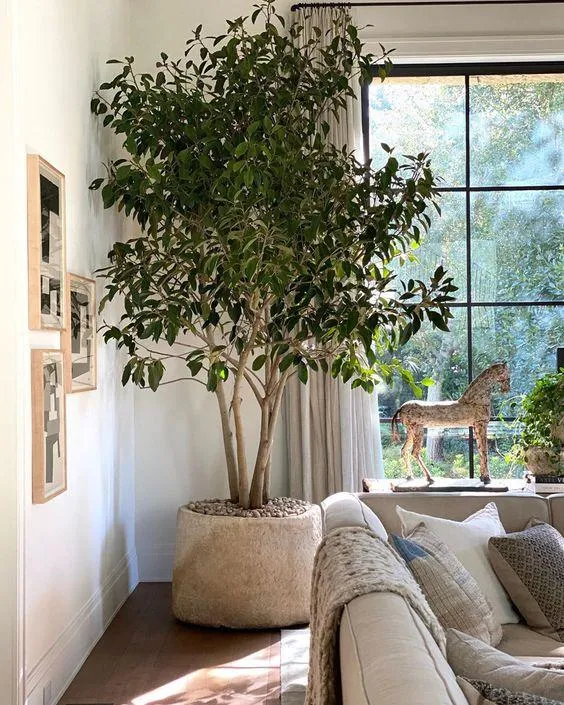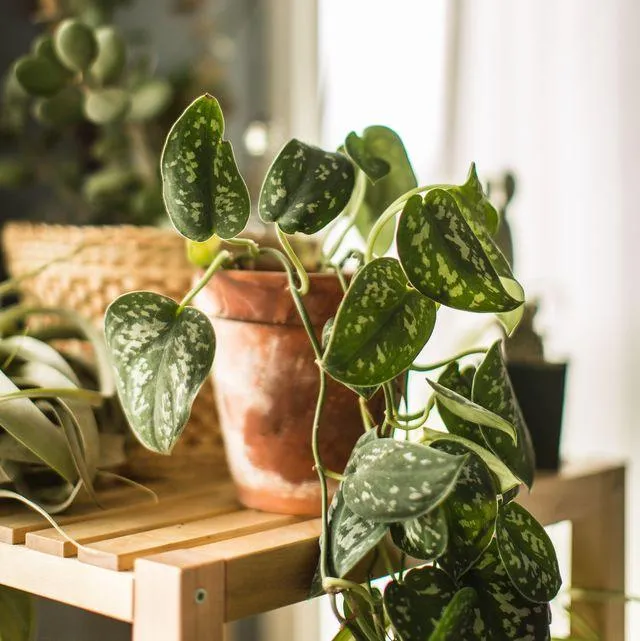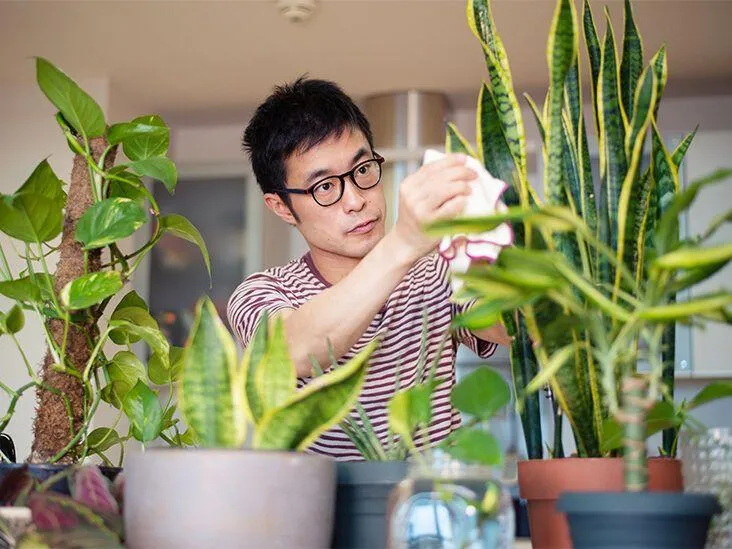Top Trees for Growing Indoors: Your Questions Answered
If you’re searching for the best trees to grow inside your home or office, you’ve come to the right place. In this article, I’ll delve into the top options and try to answer all the questions you might have about indoor tree care.
Which Tree Species Thrive Indoors?
- Chinese Evergreens – Their small, glossy leaves make Chinese evergreens (Aglaonema) pretty much maintenance-free. They tolerate low light and don’t need much water.
- Dwarf Umbrella Trees – Also calledSchefflera, these trees have clusters of leaves that resemble tiny umbrellas. They’re very forgiving of neglect and do well in medium to low light.
- Dwarf Date Palms – With their slender trunks and feathery foliage, dwarf date palms (Phoenix roebelenii) add tropical flair. Just be sure not to overwater their shallow roots.
- Peace Lilies – A favorite houseplant, peace lilies (Spathiphyllum) thrive in low light and clean the air with their large leaves. Their white blooms are a nice bonus.
- English Ivy – Its vines can climb walls and hang from baskets. English ivy (Hedera helix) removes formaldehyde from indoor air as it grows.
From my experience, these five species tolerate neglect fairly well and require minimal care. They won’t outgrow a small space quickly like bigger trees might.
What Light Conditions Do Indoor Trees Prefer?
Most trees suited for indoor growing do best in medium to low light, or around 500-1500 lux. However, their light needs vary:
- Chinese evergreens, peace lilies and English ivy survive in very low light of 150-500 lux.
- Dwarf date palms and umbrella trees will be happiest in medium light of 1000-1500 lux for a few hours daily.
- For the best growth, give trees near a sunny window at least five hours of direct sun through a window each day.
Strong sunlight can scorch leaves of some varieties. Rotate trees quarterly so all sides get even exposure. A home with mostly north-facing windows may require supplemental grow lights.
What Kind of Soil Do Indoor Trees Prefer?
When repotting indoor trees, use a soil specifically formulated for houseplants. It should be well-draining but retain enough moisture:

- Potting mix – A generic soilless blend is fine for most trees.
- Peat-based – Slightly acidic mixes like Espoma Indoor Plant Mix have nutrients trees need.
- Bark-based – Orchid bark or fir bark mixes provide aeration for palms and trees with shallow roots.
- Avoid – Gardens soils containing nutrients meant for outdoor plants may damage pots or roots indoors.
I’ve found pine bark mixes work great for trees in baskets hung from the ceiling. The chunks allow good drainage to prevent root rot in those confined spaces.
How Often Should Indoor Trees Be Watered?
Watering frequency depends on the tree’s needs, pot size and indoor conditions. As a general rule of thumb:
- Feel the soil before watering. It should be mostly dry an inch below the surface.
- Water thoroughly until it drains freely from the drainage holes. Then discard excess in the tray.
- Trees in bright light may need water every 5-7 days, compared to every 10-14 days for low-light locations.
- Check soil moisture more often in hot, dry or sunny spots and less in cool, humid areas.
- Trees in pots over 6 inches wide can go longer between waterings compared to those in smaller containers.
Too much or too little water are common mistakes. Feel free to ask for tips if you notice drought or fungal issues with your indoor trees.
How Do You Care for an Indoor Tree’s Appearance?
Part of enjoying indoor trees is keeping their foliage clean, fresh and pest-free. Here are some maintenance tips:
- Dust leaves weekly with a soft cloth or feather duster to remove debris.
- Prune off any wilted, diseased or discolored foliage with clean pruners to promote new growth.
- Mist leaves to increase humidity around the tree, which most species appreciate.
- Check carefully for signs of pests like bugs or spider mites and treat promptly if found.
- Rotate the tree’s position every few weeks so all sides grow evenly without leaning.
- Trim branches or shape the canopy if trees become leggy or overgrown for their space.
Catching issues early helps trees remain attractive indoors for years to come. Let me know if specific pest or pruning questions come up!

How Do You Transport an Indoor Tree?
Whether relocating pots or bringing new trees home, it’s best to minimize stress:
- Choose a shady spot in your yard or car to acclimate trees to lower light before moving indoors.
- Transport larger trees in their nursery pots if possible vs their decorative pots, which are less stable.
- Wrap bare roots or soil balls in a plastic bag to keep them moist but not saturated.
- Avoid prolonged sun or wind exposure, which can dry them out quickly.
- Bring trees inside at end of day or on overcast days when light levels change more gradually.
- Water thoroughly after settling into their new spot to refresh their soil.
Relocating indoor trees is easier if you remember to gradually acclimate them versus shocking them with swift change. Hopefully these tips help your trees transition smoothly!
In summary, Chinese evergreens, dwarf palm trees, and peace lilies are basically the most foolproof indoor trees. They barely need care and thrive in low light. Umbrella trees and English ivy are sort of similar but demand a smidge more light. Just water when the soil feels kind of dry, use a potting blend, dust leaves occasionally, and rotate pots sometimes. Let me know if you have any other questions!
Top 5 Trees For Indoors
| Tree | Size | Care Requirements |
|---|---|---|
| Chinese Evergreen | Small to medium | Low light, average water, tolerates low humidity |
| Peace Lily | Small | Medium light, keep soil moist, very tolerant plant |
| Snake Plant | Tall | Low light, water infrequently, very hardy plant |
| Ponytail Palm | Medium | Low light, water when soil is dry, tolerates low humidity |
| Bamboo Palm | Tall | Medium light, keep soil moist, grows well in low and bright lighting |
FAQ
-
What types of trees grow well indoors?
There are basically a few different kinds of trees that can sort of survive inside. Peace lilies, English ivy, and spider plants are excellent options as they don’t require much sunlight. Additionally, some types of ficus and bamboo do OK inside if they get a decent amount of light each day. At the same time, don’t get an oak tree – they definitely need to be outside!

-
How much light do indoor trees need?
Most trees that do alright indoors require at least six hours of indirect light every day. Without enough sunshine, they’ll potentially get pretty sad looking – their leaves may turn yellow and drop off. Perhaps you could try putting them in a spot that gets filtered light through a window. Some trees like peace lilies can manage with less, around four hours. Nevertheless, give them the brightest spot in your home that doesn’t have direct sun exposure.
-
How often should indoor trees be watered?
The amount of water an indoor tree needs basically depends on the type of tree and the pot size. As a general rule, check the soil daily – you want the top inch to remain slightly moist but not soaked. Water thoroughly whenever the top soil becomes dry. It takes trial and error to figure out the specific needs of each tree. Overwatering is also not good – it can cause root rot. So water less if you’re not sure, and don’t leave them sitting in water.
-
Do indoor trees need fertilizer?
Most indoor trees will benefit from some fertilizer during their growing season, which is typically spring through fall. Look for a diluted liquid houseplant fertilizer and apply it every few waterings when the plant is actively growing. Be careful not to overdo it – too much fertilizer can burn their delicate roots. Maybe try a slightly lower dose than what’s recommended on the packaging and see how your tree responds. You want it to be green and bushy, but not floppy.
-
How often should indoor trees be repotted?
As a general rule, repot indoor trees every couple years or when their roots start to grow out the bottom of the current pot. You might be able to get away with repotting slightly less frequently for trees that don’t seem to be outgrowing their containers quickly. Regardless, every plant’s needs are different – some may prefer to be upsized sooner. Keep an eye out for circling roots too – a sign it’s time for a larger pot. Always repot in fresh potting soil.
-
What are some common problems with indoor trees?
A few issues that indoor trees often face include inadequate light, improper watering, and pests like spider mites or scale. Leaf drop, pale leaves, or brown leaf edges are signs a tree isn’t getting enough sunshine. Overwatering can result in root rot. Underwatering stresses them too though. Check the undersides of leaves for tiny crawling bugs – a common pest problem. Good care and a little preventative spraying can help your trees stay healthy inside your home.

-
Any tips for keeping indoor trees attractive?
Here are a couple ideas to keep your indoor trees looking their best: Prune leggy growth and trim off dead or diseased stems. This encourages bushy, compact growth. Spray the leaves with a mister every now and then to increase humidity around the plant. Wipe down foliage with a damp cloth to remove dust. Rotate the pot occasionally so all sides get evenly lit. And move them to a new location every month or so for a change of scenery – plants can get bored too! Proper care means you’ll enjoy your trees for years.
